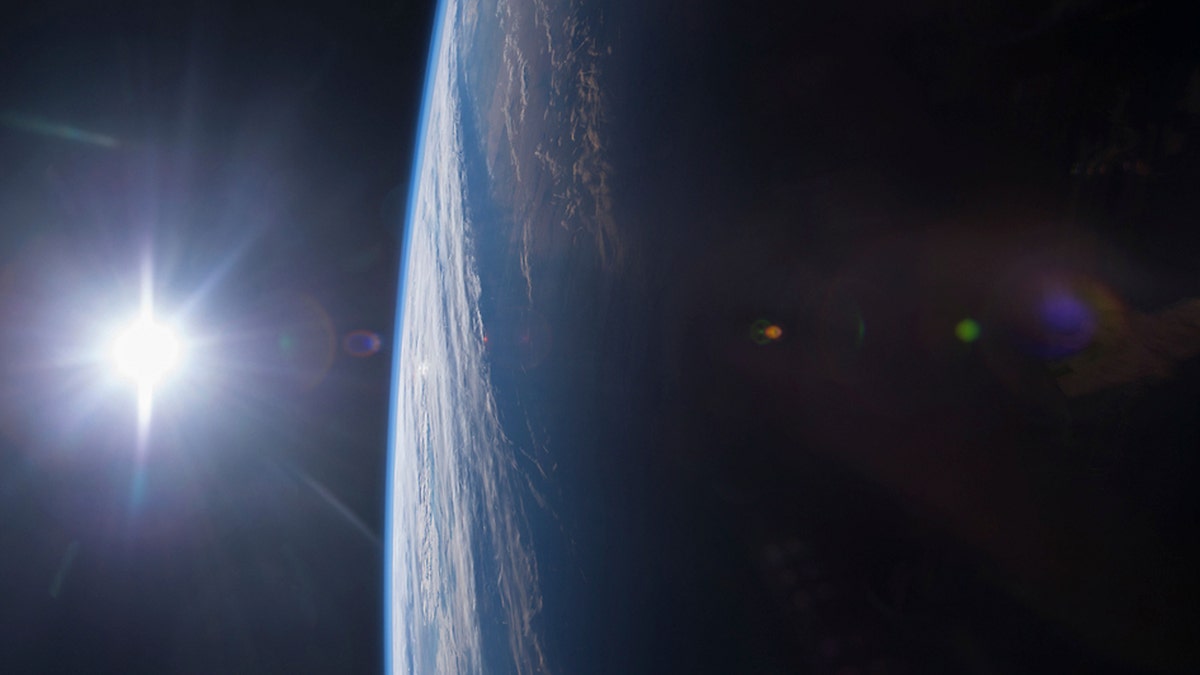
File photo - The Gulf of Mexico and U.S. Gulf Coast at sunset is shown in this image from the International Space Station and posted to social media on Dec. 14, 2014. (REUTERS/Terry Virts/NASA/Handout)
Astronomers in Australia have picked up an “alien” radio signal from space for the first time as it occurred. The signal, or radio “burst”, was discovered on May 15, 2014, though it’s just being reported by the Monthly Notices of the Royal Astronomical Society. “The burst was identified within 10 seconds of its occurrence,” said Emily Petroff, a doctoral student from Melbourne’s Swinburne University of Technology. “The importance of the discovery was recognized very quickly and we were all working very excitedly to contact other astronomers and telescopes around the world to look at the location of the burst.”
Emerging from an unknown source, these bursts are bright flashes of radio waves that emit as much energy in a few milliseconds as the sun does in 24 hours. “The first fast radio burst was discovered in 2007,” Petroff tells FoxNews.com, “and up until our discovery there were 8 more found in old or archival data.” While researchers use telescopes in Hawaii, India, Germany, Chile, California, and the California Islands to search for bursts, it is the CSIRO Parkes radio telescope in Eastern Australia that is the first to catch one as its happening.
The cause of these mysterious signals remains unknown, with possible theories ranging from black holes to alien communication. However, UFO hunters shouldn’t get too excited. According to Petroff, “We're confident that they're coming from natural sources, that is to say it's probably not aliens, but we haven't solved the case completely. The two most promising theories at the moment are that these bursts could be produced either by a star producing a highly energetic flare, or from a neutron star collapsing to make a black hole. Both of these things would be from sources in far-away galaxies just reaching us from billions of light years away.”
Catching the bursts as they happen is key to finding the source, and though Petroff’s team scrambled upon making their discovery, they didn’t move fast enough to find the afterglow and pin down the cause. “Finding one in real-time has been the goal for a while because we would then be able to act on it and mobilize other telescopes to look that way,” Petroff says. “We did this in the case of this real-time discovery, but we didn't get on the target until about eight hours later with other telescopes, at which time nothing was found.” However, they were able to eliminate a few possible causes, such as gamma-ray bursts from exploding stars and supernovae. Also, the team was able to determine that the source had been near an object with a sizeable magnetic field from the way the wavelengths were polarized.
While the source of the fast radio burst remains a mystery, the team remains hopeful that they can learn from their mistakes and one day solve the case. “All we can do is learn from our experience with this discovery and create a more efficient system for next time,” Petroff says. “We still spend a large amount of time looking for fast radio bursts with the Parkes telescope and the next time we are in the right place at just the right time, we'll be able to act faster than ever before and hopefully solve the mystery once and for all!”




















